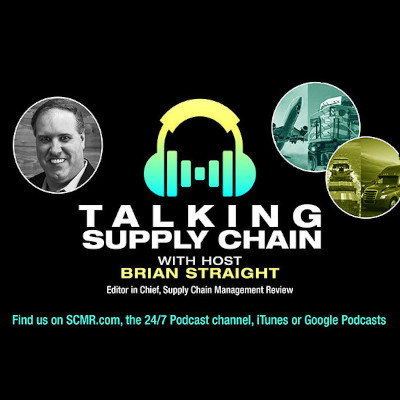Artificial intelligence, despite all its potential, is still only as good as the data feeding the system. It is a reality that businesses will soon start to learn about when decisions are being automated based on the incorrect data being used today.
Data cleansing is not new, but it is something that many companies fail to take seriously. In the past two years, 90% of the world’s data has been created according to Statista. That amounts to approximately 328.77 million terabytes of data. Data, it is said, never sleeps.
But not all of that data is good data. To get good data, you need a “data brain,” says Stephany LaPierre, founder and CEO of Tealbook.
“You have data everywhere but nowhere [so you need] ‘data hygiene’ to be able to build the brain of the supply side of organizations,” she tells Supply Chain Management Review. “Our view, beyond us even building our own application using large language model which we are in the process of doing, has been building a layer beyond anything you could do on your own.”
Tealbook was founded on the mission of taking supplier data that organizations are creating and positioning it in a way that is useful for generative AI systems.
“They need good data to be leveraged properly, and today the state of the enterprise lives in a lot of different tools,” LaPierre says. “There is no brain that pulls it all together.”
Tealbook is building a platform that takes that data and “normalizes” it so supply chains can leverage AI and machine learning algorithms in a way that is both useful and understandable.
LaPierre says that every function within procurement and supply chain is doing their own functions and generating their own data with their own tools. Collecting all this data in a way that is useful across the organization is the challenge. And each function doesn’t necessarily need the same information.
“Data quality is something that has been really manual, so we have been using AI to improve data quality,” LaPierre says. “Data quality is stakeholder facing.”
Accurate insights on bad data
Companies looking to use AI to automate decision-making that get accurate decisions, but those outcomes will be based on incorrect data. With data residing in different areas of the organization, and inside suppliers, it can be difficult to get to a place where an organization can work quicker and more efficiently.
“In a perfect world, you have all that information in one place—that is super intelligence,” LaPierre says. “But today it is still divided.”
So, while the buy side of the organization is making cuts to control costs, the supply side may be looking at bringing in more product to build and sell more finished goods.
“If a company was pulling all their data together, they would still be limited,” LaPierre says. “If you think of a business, the only two ways you can improve margin is by generating revenue or cutting costs. The cutting cost part has no data other than very tactical data such as who am I spending money with.”
While some companies are focused on automating tasks such as invoicing, that is just the tip of the iceberg, LaPierre says.
“On the buy side, we are 15, 20 years late to the game. We just went—five years ago—from on-premise [software] to cloud-based systems,” she notes. “The data in a cloud-based system still requires suppliers to come to a portal [to input their information]. You have high dependency on suppliers that may not care about your company or don’t want to update 500 different portals.”
Creating a data brain
The solution is the creation of a data brain—a system that cannot only collect all this data, but can do so in a way to encourage participation throughout the supply chain.
TealBook is working on case studies where AI can contribute to this process, such as in supplier recognition and discovery—who do you do business with, what do they do, and how to find similar suppliers.
“That’s low risk because the decision you are going to make with the information is not what you are reporting to regulators,” LaPierre says, adding that “the way to look at AI in this case is as an intern.”
Still, if you depend on accuracy in your organization, humans must still review the data, LaPierre says. She also advised companies to build data lakes on both the buy and sell sides of the business to create a 360-degree look at operations.
“The value of understanding that 360 relationship with a business is so critical, and there is so much upside, we are talking hundreds of millions or billions of dollars that are being left on the table,” she says.
SC
MR


More Procurement Strategy
- What is the future of procurement?
- The disconnect between procurement budgets and efficiency
- Gartner identifies top constraints, solutions to long-term success
- Keynotes from Procter & Gamble, Johnson & Johnson & Whirlpool execs highlight NextGen conference agenda
- Managing procurement in a price-sensitive environment
- More Procurement Strategy
What's Related in Procurement Strategy

 Explore
Explore
Topics
Procurement & Sourcing News
- Strengthening customer fulfillment: Building a strategic stakeholder network
- Trump picks former Wisconsin congressman Sean Duffy for DOT secretary
- Made in Mexico, manufactured by China
- Retail sales see gains in October, reports Commerce and NRF
- Geopolitical readiness in supply chains: Strategic challenges for leaders
- With capacity to spare, logistics real estate demand remains subdued
- More Procurement & Sourcing
Latest Procurement & Sourcing Resources

Subscribe

Supply Chain Management Review delivers the best industry content.

Editors’ Picks





